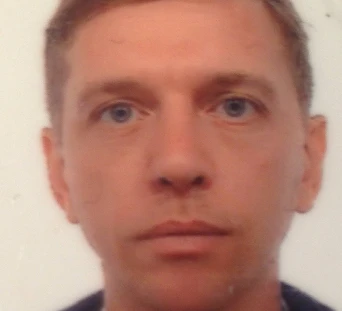150 - Safety and Efficacy of POstoPerative Ablative RadioTherapy (POPART) for Post-Prostatectomy Biochemical Recurrence
Presenter(s)

F. Ferrario1, C. Franzese2, V. Faccenda3,4, S. Vukcaj5, C. Chissotti6, R. Lucchini7, M. Badalamenti7, S. Andreoli8, D. Panizza3, M. Crespi9, A. Magli10, M. Portaluri5, M. Scorsetti11, and S. Arcangeli12; 1IRCCS-SAN GERARDO DEI TINTORI, MONZA, Italy, 2Department of Biomedical Sciences, Humanitas University, Pieve Emanuele, Milan, Italy, 3Fondazione IRCCS San Gerardo dei Tintori - Medical Physics, Monza, Italy, 4Fondazione IRCCS San Gerardo dei Tintori - Medical Physics Department, Monza, Italy, 5Department of Radiation Oncology, ASST Papa Giovanni XXIII, Bergamo, Italy, 6Department of Radiation Oncology, ASST Lecco, Lecco, Italy, 7Radiotherapy and Radiosurgery Department, IRCCS Humanitas Research Hospital, Rozzano, Italy, 8Department of Medical Physics, ASST Papa Giovanni XXIII, Bergamo, Italy, 9Department of Medical Physics, AULSS1 Dolomiti, Belluno, Italy, 10Department of Radiation Oncology, AULSS1 Dolomiti, Belluno, Italy, 11IRCCS Humanitas Research Hospital , via Manzoni 56, 20089, Rozzano, Milan, Italy, 12University of Milan Bicocca - School of Medicine and Surgery, Milan, Italy
Purpose/Objective(s): Biochemical recurrence (BCR) occurs in up to 50% of patients within five years after radical prostatectomy. Salvage radiotherapy (SRT) is the standard treatment, and recent evidence supports hypofractionated regimens—specifically Stereotactic Body Radiation Therapy (SBRT)—to the prostate bed. The POPART trial aimed to evaluate the safety and efficacy of SBRT in this setting.
Materials/Methods: The POPART trial is a multicenter, prospective observational study assessing postoperative SBRT delivered as 32.5 Gy in five alternate-day fractions. Eligible patients had histologically confirmed prostate cancer with PSA levels between 0.1 and 2.0 ng/mL and no metastases on PSMA PET. Toxicity was recorded per CTCAE v5.0, and quality of life (QoL) was measured using the ICIQ-SF, IIEF 5 and EPIC-CP questionnaires at baseline and follow-up. Minimal clinically important difference (MCID) was defined as a change of >0.5 pooled standard deviations from baseline. Statistical analyses employed ANOVA, logistic regression, and Cox models (p < 0.05 significant).
Results: Between April 2021 and September 2023, 100 patients (median age 71, range 52–84) were treated with a median follow-up of 19.1 months (range 3.0–42.4). Thirteen percent received androgen deprivation therapy (ADT); 11% had persistent disease, and 89% underwent early salvage RT for BCR. The median time from surgery to RT was 38.2 months (range 4.3–247.2) and the median pre-RT PSA was 0.296 ng/mL. No acute = grade 2 genitourinary (GU) toxicity occurred, and 5% experienced acute grade 2 gastrointestinal (GI) events. Late toxicity included 7.5% = grade 2 GU events (1.1% grade 3 radiation cystitis), and 1.1% grade 2 GI events. At baseline, 7% were incontinent and 68% had severe erectile dysfunction. MCID in QoL were noted, with the EPIC Urinary Incontinence domain declining persistently in 24.5% (p = 0.0358). The median PSA at last follow-up was 0.028 ng/mL. Eighteen patients recurred at a median of 10 months, with only 3 cases of in-field local relapse. Biochemical recurrence-free survival (BRFS) was 96.3%, 90%, 85.3% and 79.2% at 6, 12, 18 and 24 months, respectively. Larger CTV and higher baseline EPIC Bowel scores predicted acute GI toxicity, while early EPIC Incontinence MCID predicted late GU toxicity. Multivariate analysis linked acute MCID with late outcomes across several domains. Higher bladder D50% and penile bulb doses were associated with worsening acute urinary and sexual symptoms, and ISUP grade significantly predicted disease recurrence.
Conclusion: SBRT to the prostate bed is a feasible and well-tolerated treatment offering promising biochemical control rates. Longer follow-up and comparative studies are essential to further establish its role in this setting. (NCT04831970)
